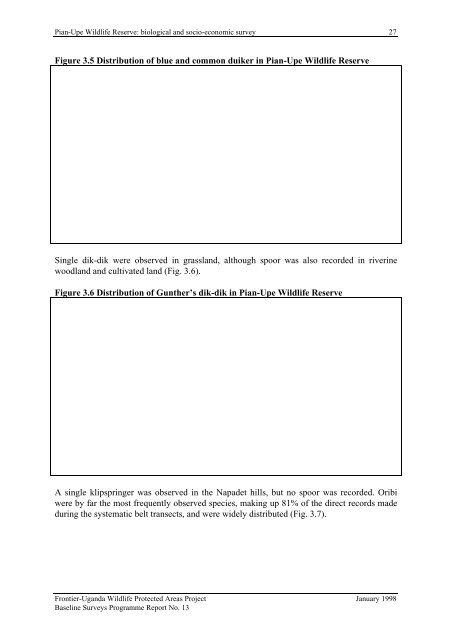Pian-Upe Wildlife Reserve - Frontier-publications.co.uk
Pian-Upe Wildlife Reserve - Frontier-publications.co.uk
Pian-Upe Wildlife Reserve - Frontier-publications.co.uk
You also want an ePaper? Increase the reach of your titles
YUMPU automatically turns print PDFs into web optimized ePapers that Google loves.
<strong>Pian</strong>-<strong>Upe</strong> <strong>Wildlife</strong> <strong>Reserve</strong>: biological and socio-e<strong>co</strong>nomic survey 27<br />
Figure 3.5 Distribution of blue and <strong>co</strong>mmon duiker in <strong>Pian</strong>-<strong>Upe</strong> <strong>Wildlife</strong> <strong>Reserve</strong><br />
Single dik-dik were observed in grassland, although spoor was also re<strong>co</strong>rded in riverine<br />
woodland and cultivated land (Fig. 3.6).<br />
Figure 3.6 Distribution of Gunther’s dik-dik in <strong>Pian</strong>-<strong>Upe</strong> <strong>Wildlife</strong> <strong>Reserve</strong><br />
A single klipspringer was observed in the Napadet hills, but no spoor was re<strong>co</strong>rded. Oribi<br />
were by far the most frequently observed species, making up 81% of the direct re<strong>co</strong>rds made<br />
during the systematic belt transects, and were widely distributed (Fig. 3.7).<br />
<strong>Frontier</strong>-Uganda <strong>Wildlife</strong> Protected Areas Project January 1998<br />
Baseline Surveys Programme Report No. 13

















